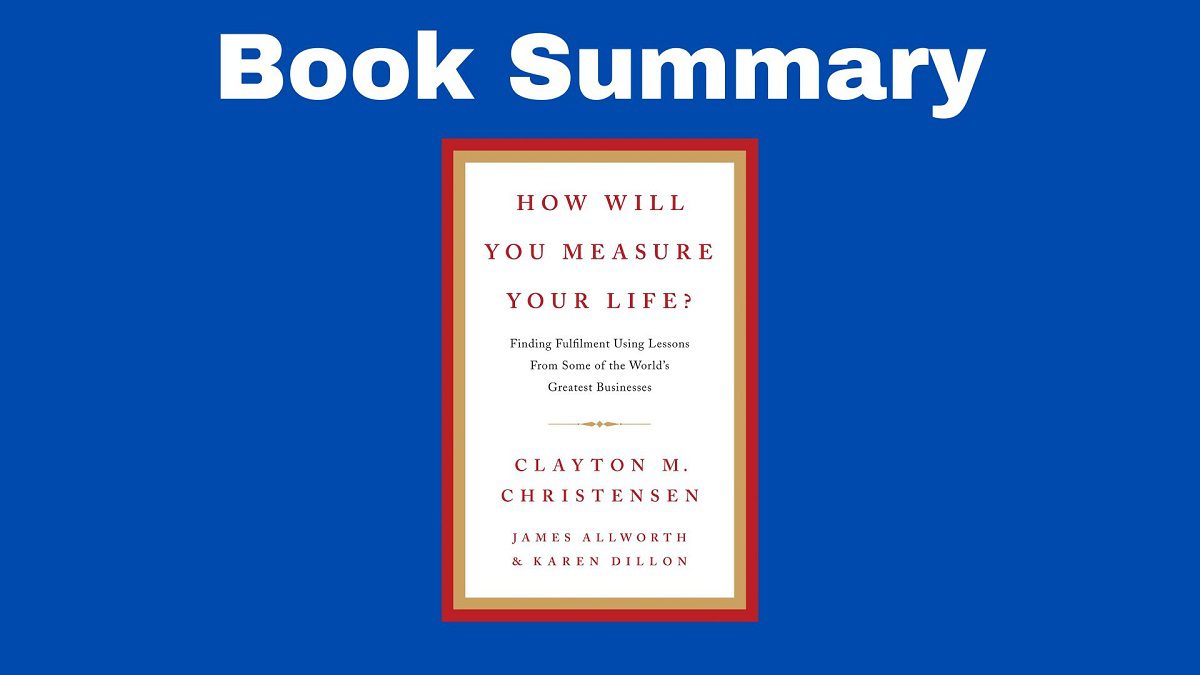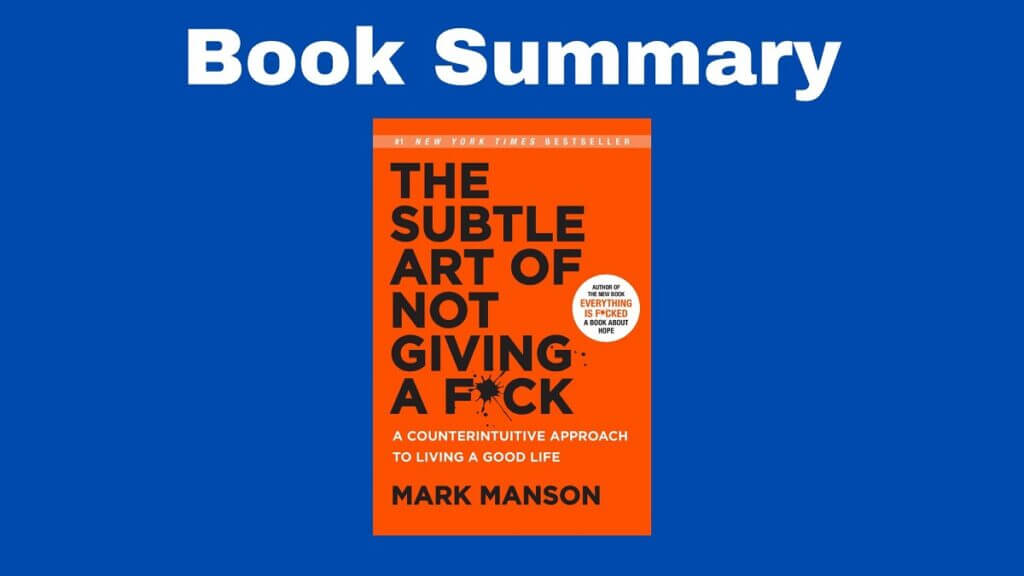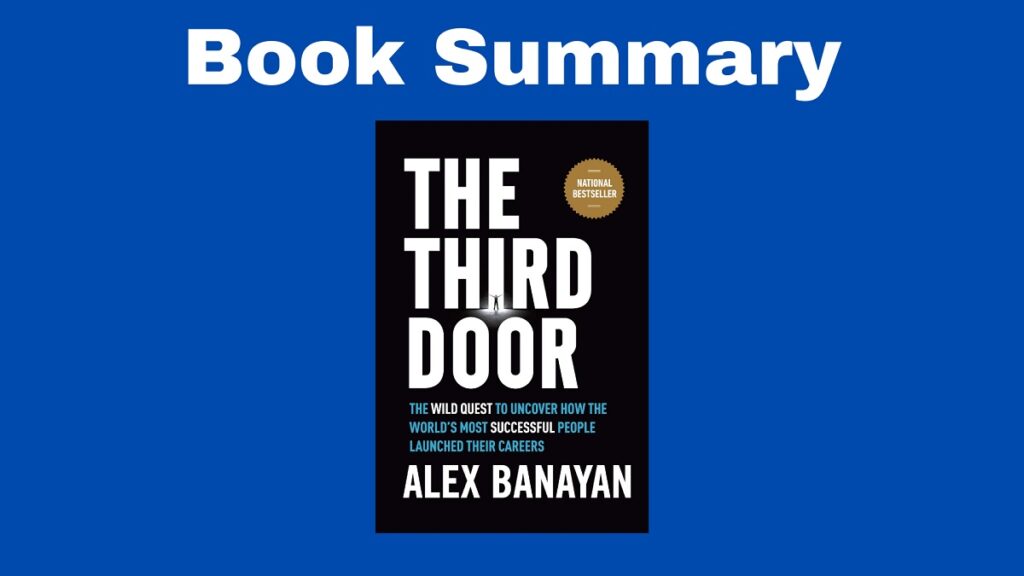The Book in Three Sentences
In this summary of How Will You Measure Your Life, Clayton M. Christensen discusses guidelines to achieve happiness, as well as the traps that lead to unhappiness. The speech became so popular that Christensen turned it into a book. Through a series of questions, the author provides a path to fulfillment.
How Will You Measure Your Life? Summary
Prologue
Harvard professor and best-selling author Clayton M. Christensen realized that many of his classmates were unhappy. So why is it that some incredibly successful and rich people are unhappy? How is it that their personal relationships deteriorated while their professional lives thrived? How is it that some incredibly talented and highly educated people ended up in prison? The author believes that nobody deliberately works their entire life to get divorced, estranged from his family, or in jail. This book has three parts: the first teaches you to be happy and successful in your career, the second one is about finding enduring happiness in relationships and the third part is about living a life of integrity.
Chapter One: Just Because You Have Feathers…
Humans have been looking for happiness and meaning for thousands of years. The book offers a series of business and economic theories. These theories don’t tell you what to think, they tell you how to think. For the most part, this book doesn’t offer straight answers, you have to figure them out yourself and the author uses theories because they can explain what will happen before it does.
Section I: Finding Happiness in Your Career
Don’t settle for a job you don’t like and don’t give up something you truly love because it doesn’t seem realistic. Always choose the best option available even if they weren’t part of your plan.
Chapter 2: What Makes Us Tick
Incentives are not the same as motivation. If you give someone an incentive, you do so because you want them to do something. If someone is motivated, they do something because they want to. Incentives are external but motivation is internal. Sometimes the motivation factor is about building something yourself, not having the end result. This is an idea similar to the journey before the destination. Accomplishing, learning, and contributing can be motivating as well.
Chapter 3: The Balance of Calculation and Serendipity
Options for your strategy come from two sources: anticipated opportunities (the ones you can see and pursue) and unanticipated opportunities (the problems that emerge when you’re trying to implement a plan). When unanticipated opportunities arise, a company has to decide if they want to stick to the original plan, modify it, or replace it. To develop a winning strategy, companies have to evolve, focus when necessary, and move on to the next big thing when it comes along.
Having a strict plan only makes sense under certain circumstances. We’re constantly deciding between deliberate strategies and the emerging unanticipated alternatives. Therefore, we have to decide if we want to stick to our plan or change strategies depending on where we are on our journey.
Chapter 4: Your Strategy Is Not What You Say It Is
Your strategy for your life is not about what you say, it’s about where you actually spend time, money, and energy. Value endeavors that offer long-term success rather than immediate gratification. Manage your limited resources to those pursuits that are most important. This is a continuous process and not a one-time event.
When given the choice, invest your time and energy in relationships rather than work. Investing in relationships won’t give you immediate results. In fact, you won’t see results for months, years, or even decades, but allocating resources to your family and close friends is the best decision you can make and it’ll have the greatest impact. By taking that decision, you’re making a statement about what you care about. You’ll never become the person you want to be unless you show the things that matter to you through your actions.
Section II: Finding Happiness in Your Relationships
It might be tempting to spend all of your time and energy on your career, but don’t neglect your friends and family. Focusing on people won’t bear fruit for years, but it’s still one of the most important aspects of life. Set boundaries when it comes to working. Be true to what you value most and if that happens to be family, show it through your actions. Work can be fulfilling, but there’s nothing like the happiness of maintaining intimate relationships.
With children, you have to learn what works as much as what doesn’t. When it’s the latter, don’t see it as a failure and try something else instead.
Chapter 5: The Ticking Clock
Even when things in your family seem to be going well, don’t let these relationships become secondary. If you do so, serious problems may appear and it’ll be too late to fix them. Invest in your family even when it doesn’t seem necessary.
Work can become part of our identity and we might give it our full attention, ignoring friends and family in the process. Failing to invest in those people can have serious consequences. Never look for the returns of an investment you’ve never made. Invest in your relationships long before you need them to pay off for you. With people, a tiny investment can lead to big returns.
Chapter 6: What Job Did You Hire that Milkshake for?
Don’t focus on what you think others need, remove yourself from the equation and truly give them what they need. Have empathy and be selfless. Every successful product or service started as a problem to be solved. In both your personal and professional life, try to identify the job you were hired to do and do it. The path to happiness is finding someone you want to make happy.
Chapter 7: Sailing Your Kids on Theseus’s Ship
To determine what a child can or cannot do, we must look at the resources, processes, and priorities just as if they were a business. Resources can be financial or material. Examples of resources include time and energy, talents, relationships, and experience. Processes are what allows a child to create something. This involves how they think, ask questions and solve problems. Finally, priorities determine the child’s decision. In other words, resources are what the child uses, processes are how they do it, and priorities are why they do it.
Don’t remove the circumstances that allow a child to develop processes. Teach your children the value of teamwork, entrepreneurship, preparation, and more. Teach your children to solve their problems rather than solve their problems for them. The most important value you can teach your kids is priorities. When a child is ready to learn, you have to be there for them. Don’t let other people teach them the values they deem important. Don’t lose the opportunity to teach values to your kids.
Chapter 8: The Schools of Experience
Teach your children to do difficult things because this equips them to deal with the hardships of life. Dealing with setbacks and stressful situations is one of the best skills one can develop. This is shaped by the experiences you have. Teach your children that if they’re trying to get an out-of-reach goal and fail, that’s worth celebrating because it means they’re aiming high. Let your child see the consequences of ignoring school assignments. This might be difficult, but the child will learn to take responsibility for their actions. Taking on difficult challenges and failing at them is how you build resilience.
Chapter 9: The Invisible Hand Inside Your Family
To help a child make an important decision when we’re not there for them, build a culture in your family. This is how every member works towards a common goal. By doing this, each member will eventually assume the way they’ve been doing things is the correct way. In other words, the culture is the norms or guidelines that describe how your family behaves. Creating a culture within a family is difficult because you come from a family that had its own culture, your spouse comes from a different family with a different culture and then you have kids who have their own personalities.
Section III: Staying Out of Jail
Chapter 10: Just This Once
We all take a series of small decisions that steer us toward being someone with integrity or not. These choices, though seemingly inconsequential, are of extreme importance. Marginal thinking encourages someone to do something just once. Eventually, the consequences are catastrophic. When you encounter such a decision, simply say no and walk away.
Epilogue
By having a clear purpose in life, you can leave an extraordinary legacy. For a company, a purpose has three parts, a likeness (this is the vision the key leaders have), a deep commitment from employees and executives, and the metrics you use to measure your progress. Your purpose must be deliberate, chosen, and managed. Never forget that this is a process and not an event.
Further Reading
If you liked How Will You Measure Your Life, you might also like:




